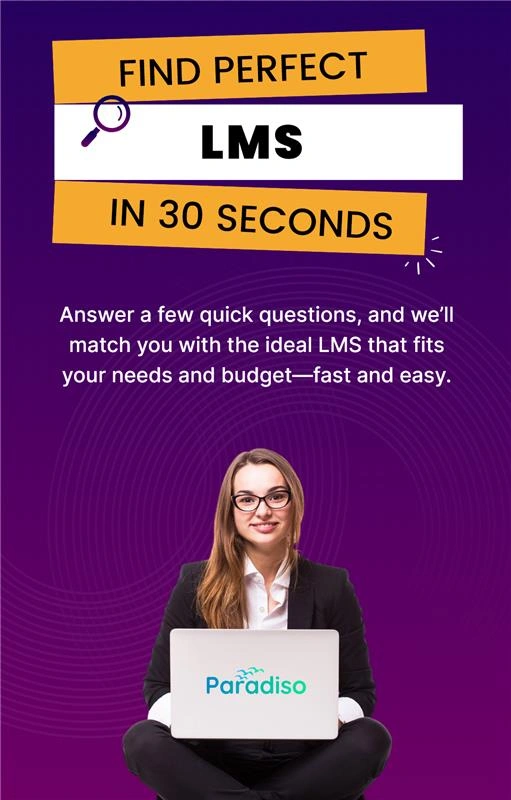In today’s fast-paced digital world, Learning Management Systems (LMS) are vital tools for delivering educational content, managing training programs, and developing employees. Free LMS platforms have become popular, especially among small businesses, educators, and startups looking for cost-effective ways to enhance their learning initiatives.
These platforms offer significant value by removing licensing fees and lowering entry barriers, providing essential features such as course creation, user management, and basic reporting without any initial investment. Their user-friendly interfaces and open-source options allow organizations to customize and extend functionality as needed.
Many adopt free LMS solutions to test e-learning waters before committing to more advanced, paid options. However, it’s essential to understand their limitations—such as scalability, support, and security—to ensure they align with long-term training goals.
In this article, we will explore these platforms, their benefits, and what factors to consider when choosing an LMS.
All-in-One Free LMS
for Organizations Across Industries
Say goodbye to trials and unreliable open-source solutions. Unlock the full potential of your team with Paradiso’s free LMS – the easiest way to streamline learning and development.
Common Limitations of Free LMS Platforms
While free LMS solutions are attractive entry points for organizations, they come with inherent constraints that can impact effectiveness and growth. Recognizing these limitations helps organizations plan better and avoid future bottlenecks.
1. Limited Customization and Branding Options
Many free LMSs restrict how much you can customize their appearance, branding, and interface. This often results in a generic look that may not reflect your organization’s identity, potentially affecting user engagement and professionalism.
2. User and Course Capacity Restrictions
Free platforms tend to cap the number of users or courses hosted. For example, a free plan might permit only a few hundred learners or a limited set of courses. As your organization grows, these restrictions can force early migration to paid systems.
3. Limited Features and Functionality
Advanced capabilities like detailed analytics, automated certifications, social learning features, and comprehensive reporting are often absent in free options. This can hinder tracking learner progress and delivering sophisticated training programs.
4. Support and Maintenance Challenges
Free LMSs usually provide minimal support, relying on community forums or FAQs. When you encounter system issues or need customization, delays in troubleshooting may occur, challenging system reliability.
5. Security and Privacy Concerns
Without rigorous security measures, free LMS solutions might be vulnerable to data breaches or non-compliance with privacy laws like GDPR. For organizations handling sensitive information, this is a critical consideration.
6. Scalability and Performance Limitations
As your training demands increase, free LMSs may experience performance issues due to limited server resources or architecture constraints, hampering growth and user experience.
7. Limited Integration Capabilities
Connecting with other enterprise systems such as HR, CRM, or content repositories is often restricted or impossible in free LMSs, causing workflow fragmentation and administrative overhead.
In summary, while free LMSs are useful for initial testing and small-scale needs, their limitations must be acknowledged. Planning ahead for platforms that support scalability and advanced features ensures your training initiatives can grow effectively.
Restricted Features and Functionality of Free LMS Solutions
Free LMS platforms are appealing due to zero initial costs but often fall short in key areas vital for effective training delivery. These restrictions include limited analytics, minimal integration, and constrained customization—factors critical for engaging learners and tracking progress accurately.
Limited or No Advanced Analytics
Analytics dashboards enable tracking learner engagement, assessment scores, and training ROI. Most free LMSs lack comprehensive reporting features, making it difficult to assess training effectiveness or identify improvement areas. Industry research shows that better analytics significantly increase learner engagement.
Restrictions on Third-Party Integrations
Seamless connections with other business tools like HR systems or content libraries enhance LMS functionality. Free options often limit or omit third-party integrations, leading to siloed data and administrative inefficiencies.
Limited Customization
Customization options like branding, course layout, and user interface design are often restricted. This can weaken your organization’s identity and learner motivation, particularly for large or brand-centric organizations.
Impact on Effective Learning Management
These feature restrictions can hinder data collection, personalized learning, and administrative workflows. Relying solely on free LMSs may result in less engaging, less effective training programs that don’t scale well with organizational growth.
Storage and User Limits: Constraints for Growing Organizations
Many free LMS platforms impose restrictions on storage and license counts. While manageable initially, they can become significant barriers as your organization scales.
Storage Capacity Restrictions
Free platforms often offer limited space—ranging from 100MB to a few gigabytes—limiting the amount and quality of content, especially multimedia-rich courses. Running out of space hampers content updates and new course deployment.
User Capacity Limitations
User caps (sometimes as low as 50 or 100 learners) restrict the number of active participants. As your organization grows, exceeding these limits forces costly upgrades or platform changes, disrupting learning continuity.
Impact on Organizational Growth
These limitations constrain your ability to deliver consistent training at scale, often leading to fragmented efforts or the need for multiple systems. Paid LMS solutions offer scalable storage and user licensing, supporting sustained growth.
All-in-One Free LMS
for Organizations Across Industries
Say goodbye to trials and unreliable open-source solutions. Unlock the full potential of your team with Paradiso’s free LMS – the easiest way to streamline learning and development.
Branding and Customization Restrictions
The ability to align an LMS with your organization’s branding enhances learner engagement and trust. However, many free LMS platforms impose restrictions that can hinder this process.
Visual and Design Limitations
Restrictions on logo placement, color adjustments, and layout modifications often exist, preventing a seamless brand experience.
Structural Customization Challenges
Limited control over navigation, dashboards, and course structure reduces flexibility in creating engaging, branded learning environments.
Impact on Learner Experience
Disjointed branding across digital platforms can affect learner motivation and perceived professionalism—especially problematic for large or brand-focused organizations.
While some open-source or customizable platforms can mitigate these issues, evaluating your flexibility needs upfront is vital.
Lack of Dedicated Support and Maintenance for Free LMS
Support quality is a critical factor in maintaining a reliable, secure learning environment. Free LMS solutions often lack dedicated technical support, which can pose operational challenges.
Limited Customer Support
Relying on community forums and self-help resources can delay issue resolution. Critical problems might remain unresolved for extended periods.
Maintenance and Upgrades
Without official support, system updates, security patches, and backups depend on internal resources, increasing the risk of vulnerabilities or downtime.
Operational Risks
Downtime, security lapses, or unresolved bugs can disrupt learning activities and erode stakeholder confidence. Investing in paid LMS services ensures reliable support and ongoing system maintenance.
Data Security and Privacy Challenges in Free LMS Platforms
Protecting learner data and ensuring compliance with privacy laws are paramount. Free LMSs often lack comprehensive security measures, raising potential risks.
Limited Data Protection
Many free platforms do not implement advanced encryption or access controls, increasing vulnerability to breaches.
Privacy Law Compliance
Non-compliance with laws like GDPR or CCPA can lead to legal penalties. Free LMS providers might lack transparent policies or necessary security features to meet these standards.
Security Vulnerabilities
Outdated or minimally maintained platforms are targets for cyberattacks, risking data integrity and organizational reputation.
Organizations handling sensitive data should prioritize platforms with strong security and compliance measures to mitigate these risks.
Impact of Limitations on Your Learning Initiatives
The constraints within free LMS or training tools can impede your organizational growth and training effectiveness. Recognizing these impacts helps in planning better strategies.
User Experience and Engagement
Slow loading speeds, poor interface design, or limited mobile responsiveness reduce learner motivation, leading to lower completion rates.
Scalability Challenges
System crashes or slow performance under increased load delay training deployment, affecting productivity and skills development.
Compliance and Risk
Limited reporting and tracking can hinder audit preparedness and compliance, exposing your organization to legal or regulatory penalties.
Addressing these issues through upgraded, scalable LMS ensures continuous improvement, better learner satisfaction, and sustainable growth.
When to Upgrade: Recognizing the Turning Point
Knowing when to migrate from a free LMS to a paid, enterprise-grade platform is essential for maintaining training quality. Signs include exceeding user or content limits, needing advanced features, and seeking better security/support.
Indicators to Watch
- Growing user base and content volume surpassing free plan limits
- Requirement for advanced analytics, certifications, and integrations
- Need for full branding, customization, and a professional learner environment
- Desire for dedicated support, security, and compliance tools
- Scaling organization, onboarding, and training needs expanding rapidly
Transitioning at the right time avoids operational disruptions and enhances learning impact.
Consider solutions like Paradiso LMS, offering scalability, customization, security, and support—tailored for long-term success.
Cost vs. Benefit: Making Smarter LMS Upgrade Decisions
To decide on an LMS upgrade, conduct a thorough cost-benefit analysis. Weigh factors like the increased productivity, learner engagement, compliance, and scalability against licensing or subscription costs.
Quantitative Analysis
Calculate direct expenses (licensing, integration, training) and measure benefits (reduced training time, improved completion rates).
Qualitative Evaluation
Assess user satisfaction, brand consistency, and strategic alignment—considering long-term organizational goals.
Scenario Planning
Develop best-case and worst-case scenarios to visualize potential impacts, ensuring investment offers tangible returns.
A well-executed analysis supports data-driven decisions, helping you select the right platform to meet future challenges.
Alternatives & Hybrid Approaches: Optimize Learning Investments
Instead of choosing exclusively between free or paid LMSs, organizations are exploring hybrid models that combine various tools for optimal results.
Advantages of Hybrid Approaches
– Cost-effective blend of free and premium solutions
– Flexible content delivery and personalization
– Scalable as your organization grows
– Reduces dependency on a single provider
Examples of Hybrid Strategies
– Use free LMS for basic courses; supplement with paid courses from external providers
– Combine open-source tools with paid support or advanced plugins
– Mix live instructor-led sessions via free video conferencing tools with asynchronous content in paid LMSs
Managing such strategies involves assessing training needs, ensuring compatibility, and measuring learning outcomes for continuous improvement.
Paradiso LMS: Your Path Beyond Free LMS Limitations
Paradiso LMS offers a scalable, customizable platform designed to elevate your e-learning initiatives beyond the constraints of free solutions. It combines extensive features, security, support, and integrations tailored for growth.
Addressing Free LMS Challenges
– Unlimited User and Content Capacity: Supports organizational expansion without restrictions
– Full Branding & Personalization: Creates engaging, tailored learning environments
– Advanced Security & Privacy: Meets GDPR and industry standards
– Seamless Integrations: Connects with HR, CRM, and content platforms
– Dedicated Support & Maintenance: Ensures system reliability and expert assistance
Success Stories
– A global firm increased engagement by 40% with personalized learning.
– An educational institute improved completion rates by 25% through customized pathways.
– A healthcare organization streamlined compliance training effectively.
Paradiso LMS’s proven flexibility and support help you unlock your full e-learning potential while scaling effortlessly.
Conclusion & Actionable Insights
While free LMS tools are tempting for initial small-scale use, they often limit growth, customization, and security. As your training needs evolve, investing in a robust, cloud-based, feature-rich LMS like Paradiso provides scalability, security, and support—key for sustainable success.
Request a personalized demo or consultation to discover how Paradiso LMS can elevate your training programs beyond free platform constraints, aligning with your strategic goals and future expansion.

















